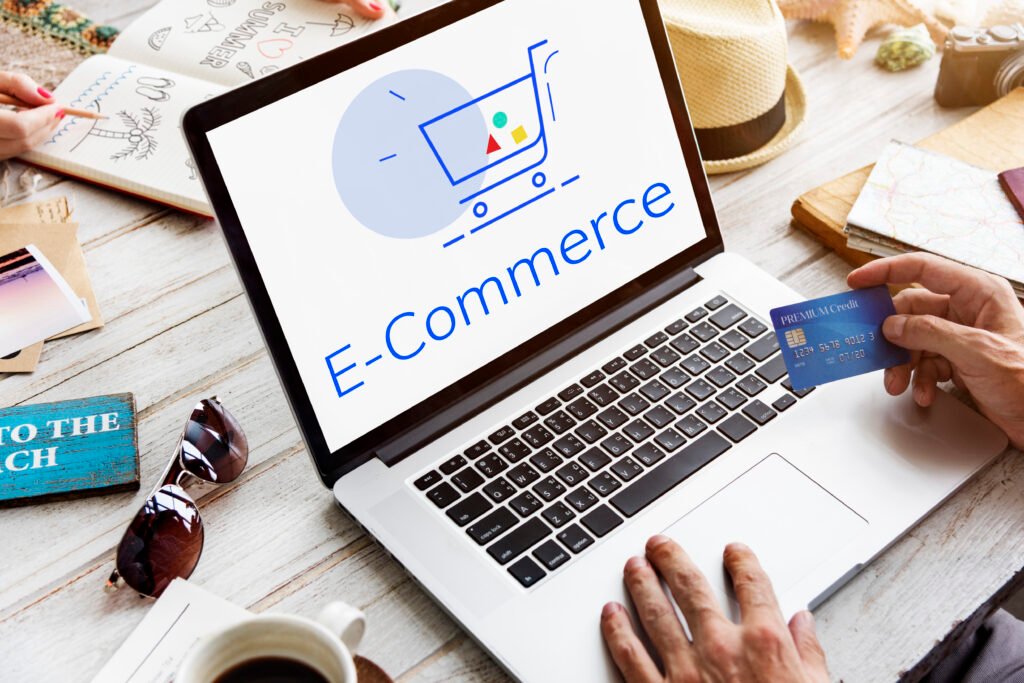
Earning Money Online by Starting an E-Commerce Store
In today’s digital world, the barriers to starting a business have never been lower. E-commerce, in particular, has revolutionized how entrepreneurs can earn money online. Whether you’re dreaming of launching a full-scale retail empire or simply want to test the waters with a side hustle, starting an e-commerce store offers vast opportunities for success. Here’s a comprehensive guide to help you navigate the process of setting up and thriving in the online marketplace.
Why Start an E-Commerce Store?
Low Startup Costs: Compared to brick-and-mortar businesses, starting an e-commerce store requires significantly less capital. With minimal overhead costs and the ability to work from anywhere, the financial barrier to entry is relatively low.
Global Reach: An e-commerce store allows you to tap into a global market. Unlike physical stores limited by geographic location, your online store can attract customers from around the world.
Flexibility and Scalability: E-commerce offers flexibility in terms of work hours and location. Moreover, it’s easy to scale your business, whether by expanding your product range, entering new markets, or increasing your marketing efforts.
Data-Driven Insights: Online stores provide valuable data on customer behavior, sales trends, and inventory management. This data can help you make informed decisions and optimize your business strategies.
Steps to Start Your E-Commerce Store
Identify Your Niche:
Success in e-commerce often starts with finding a niche market. Consider your interests, industry trends, and customer needs. A well-defined niche helps you stand out and target a specific audience effectively.
Conduct Market Research:
Analyze the market to understand demand, competition, and pricing. Tools like Google Trends, keyword research, and competitor analysis can provide insights into what products are in demand and how you can differentiate your store.
Retail Arbitrage:
Purchase products at a lower price from suppliers and sell them at a higher price.
Dropshipping:
Partner with suppliers who handle inventory and shipping, allowing you to focus on marketing and customer service.
Private Labeling:
Create your own brand by sourcing products from manufacturers and selling them under your brand name.
Digital Products:
Sell digital goods like e-books, online courses, or software.

Create a Business Plan:
Develop a comprehensive business plan outlining your goals, target audience, marketing strategies, and financial projections. A solid plan will guide your business decisions and help you stay focused.
Set Up Your Online Store:
Choose an E-Commerce Platform: Popular platforms like Shopify, WooCommerce (for WordPress), BigCommerce, and Wix offer various features and customization options. Select one based on your needs, budget, and technical skills.
Design Your Store: Create a user-friendly and visually appealing website. Ensure that it is mobile-responsive, easy to navigate, and optimized for conversions. High-quality product images and clear descriptions are crucial.
Set Up Payment Processing: Integrate secure payment gateways like PayPal, Stripe, or Square to process transactions smoothly and securely.
Source Your Products:
Depending on your business model, find reliable suppliers or manufacturers. If you’re creating your own products, ensure that you have a consistent production process and quality control.
Develop a Marketing Strategy:
SEO: Optimize your website for search engines to improve visibility and attract organic traffic.
Social Media Marketing: Use platforms like Facebook, Instagram, and Pinterest to promote your products and engage with your audience.
Email Marketing: Build an email list and send newsletters, promotions, and personalized offers to nurture customer relationships.
Paid Advertising: Consider using Google Ads or social media ads to drive targeted traffic to your store.

Launch and Promote
Tips for E-Commerce Success
- Focus on Customer Experience: Prioritize customer satisfaction by offering excellent service, easy returns, and prompt responses to inquiries. A positive shopping experience encourages repeat business and positive reviews.
- Optimize for Conversions: Continuously test and improve your website’s conversion rate. This includes optimizing product pages, simplifying the checkout process, and using persuasive calls-to-action.
- Monitor Analytics: Regularly review your store’s performance using analytics tools. Track metrics like traffic, conversion rates, and sales to identify areas for improvement and make data-driven decisions.
- Stay Adaptable: E-commerce is a dynamic field with ever-evolving trends and technologies. Stay informed about industry developments and be willing to adapt your strategies accordingly.
Starting an e-commerce store can be a rewarding venture, offering both financial opportunities and personal satisfaction. With the right planning, execution, and marketing, you can build a successful online business that caters to a global audience. Whether you’re passionate about a particular niche or looking for a new revenue stream, the world of e-commerce is ripe with potential. So, take the plunge, turn your ideas into reality, and embark on your journey to financial freedom through online retail.
By leveraging the power of e-commerce, you can not only earn money online but also build a business that aligns with your vision and lifestyle. Dive in, stay dedicated, and watch your e-commerce store thrive in the digital marketplace.